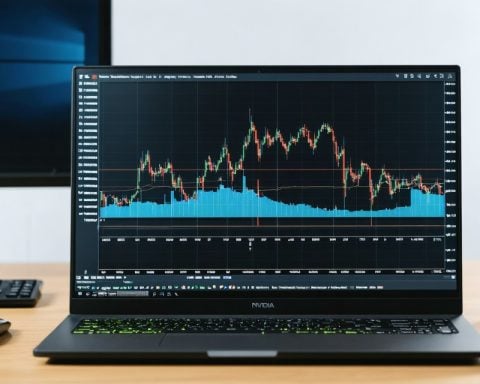- Ripple XRP revolutionizes cross-border payments with near-instantaneous international transactions, leveraging blockchain technology.
- RippleNet streamlines operations by eliminating delays and costs associated with multiple intermediaries in traditional banking.
- The adoption of Ripple XRP faces regulatory and institutional resistance, alongside the volatility of crypto markets.
- Ripple XRP presents a potential bridge between traditional finance and decentralized finance (DeFi), promising speed and cost-efficiency.
- Ripple’s low-energy payment model supports global sustainability efforts, aligning with climate change initiatives.
- Ripple XRP is predicted to grow in market presence through investments in security and sustainability, shaping the future of global commerce.
Imagine sending money across the world in seconds, not days. Welcome to the future of cross-border payments, led by Ripple XRP. Embracing the power of blockchain technology, Ripple is shaking up traditional banking with a revolutionary model that promises near-instantaneous international transactions. This game-changing advancement is poised to reshape global commerce by swiftly transcending borders and providing a more efficient system.
Why Ripple XRP is Making Waves
RippleNet, the blockchain behind XRP, offers a sleek alternative to outdated banking systems, bypassing the delays and costs tied to multiple intermediaries. This modern solution effectively streamlines operations, making it a compelling choice for businesses and consumers alike. With promises of speed, cost-efficiency, and international reach, Ripple XRP outpaces the sluggish mechanisms of traditional banks.
The Double-Edged Sword
However, integrating Ripple XRP into established financial frameworks isn’t without hurdles. Regulatory challenges loom large, coupled with resistance from institutions wary of change. The volatile nature of cryptocurrency markets further complicates adoption prospects. Yet, navigating these challenges could lead to a seamless bridge between traditional finance and the burgeoning world of decentralized finance (DeFi).
A Glimpse into Tomorrow
As Ripple XRP garners traction, its influence in shaping the financial landscape is undeniable. Analysts predict a surge in Ripple’s market presence, bolstered by continuous investments in security and sustainability. Offering a low-energy, robust payment model, Ripple aligns with global efforts to combat climate change.
In a world racing toward digitalization, Ripple XRP stands at the forefront, heralding a future where finance is faster, more transparent, and secure. This digital currency not only challenges the status quo but also promises to lead the charge in a new era of global commerce.
Ripple XRP: A Game-Changer in Cross-Border Payments
Key Advantages of Ripple XRP
1. Speed and Cost-Efficiency
Ripple XRP dramatically reduces transaction times from days to mere seconds. This time-saving capability drastically lowers operational costs and eliminates the need for multiple intermediaries that traditional banking systems depend on. As a result, Ripple XRP provides an appealing solution for businesses seeking swift international transactions.
2. Market Forecast and Investments
Analysts forecast robust growth in Ripple’s market presence. This positive outlook is supported by continuous technological advancements and innovations in security and sustainability within the Ripple network. These attributes align Ripple with global initiatives aimed at reducing carbon footprints and ensuring environmental sustainability.
3. Security and Sustainability
Ripple XRP leads in integrating cutting-edge security measures with their blockchain technology to protect user data and ensure transaction integrity. Compared to other cryptocurrencies, Ripple’s low-energy payment model is environmentally friendly, appealing to sustainability-conscious investors and institutions.
Key Challenges and Considerations
1. Regulatory Challenges
Ripple XRP faces significant regulatory hurdles globally. Varying international regulations pose challenges to its adoption, with some countries being more resistant due to concerns over cryptocurrency volatility and regulatory loopholes.
2. Resistance from Traditional Financial Institutions
Established financial frameworks often resist blockchain technologies like Ripple due to skepticism and the inherent volatility of cryptocurrencies. Banks and financial institutions accustomed to traditional processes might resist change despite the potential benefits.
3. Volatility of the Cryptocurrency Market
Like all cryptocurrencies, Ripple XRP is susceptible to market fluctuations which can influence investor sentiment and adoption rates, potentially affecting the stability and long-term viability of the payments network.
Related Questions
1. How does Ripple XRP compare to other cryptocurrencies like Bitcoin and Ethereum?
Ripple XRP offers faster transaction speeds and lower costs compared to Bitcoin and Ethereum, making it more suitable for international, commercial-scale payments. Its consensus ledger and low energy cost stand out compared to the proof-of-work models in Bitcoin.
2. What are the main regulatory challenges Ripple faces globally?
Ripple confronts diverse regulatory environments across countries, with significant legal battles like the SEC lawsuit in the United States challenging its classification as a security or currency. These regulatory disputes can impact investor confidence and market expansion.
3. How does Ripple XRP contribute to sustainable finance?
Ripple’s consensus ledger mechanism requires significantly less energy than traditional mining used in other cryptocurrencies. This low-energy model aligns with global climate initiatives, making it an attractive option for businesses committed to reducing their carbon footprint.
For more information, visit Ripple’s official website.


















